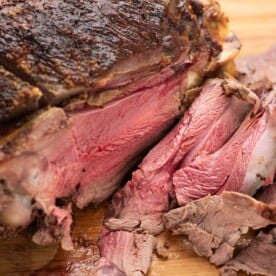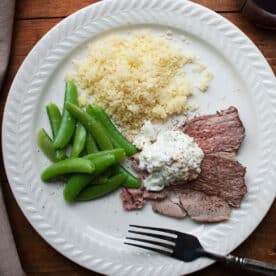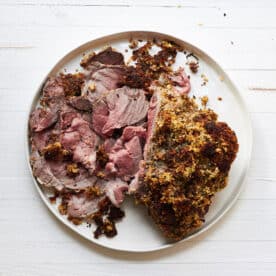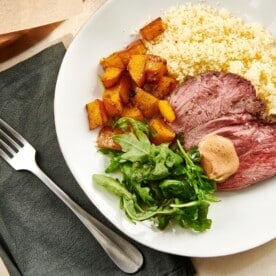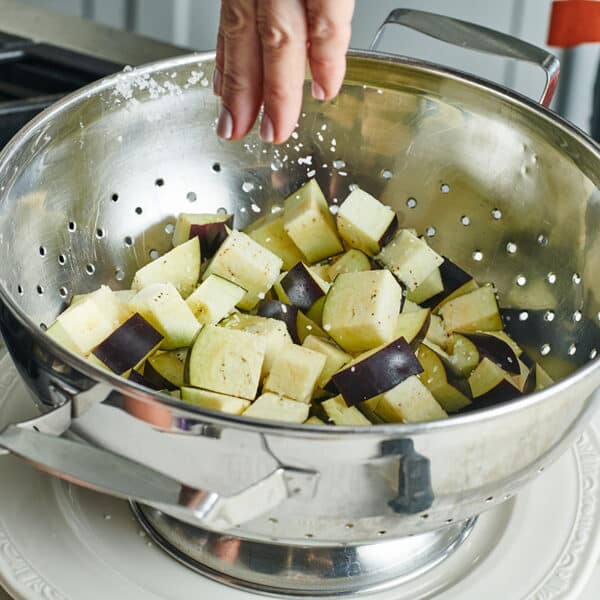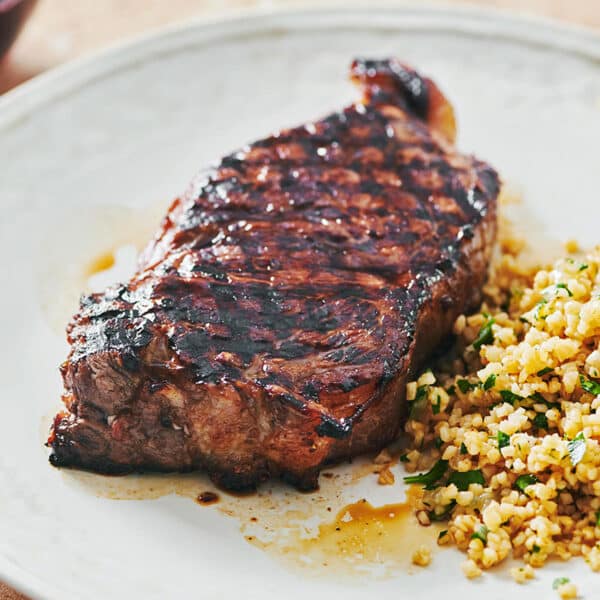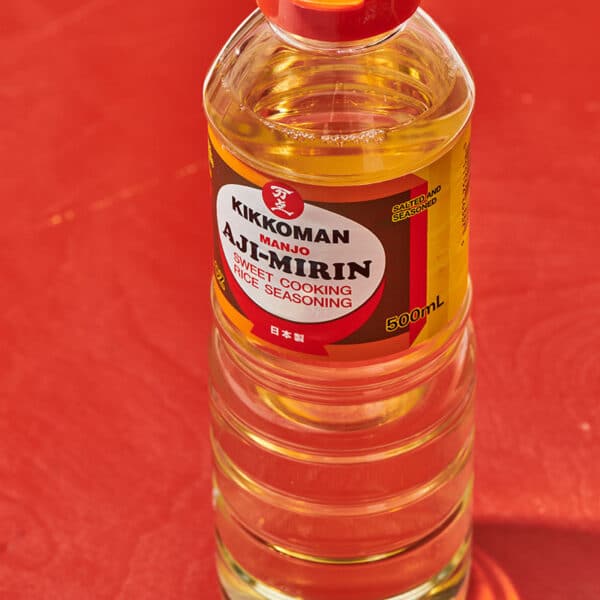How to Cook Leg of Lamb
on Dec 09, 2020, Updated Apr 01, 2025
This post may contain affiliate links. Please read our disclosure policy.
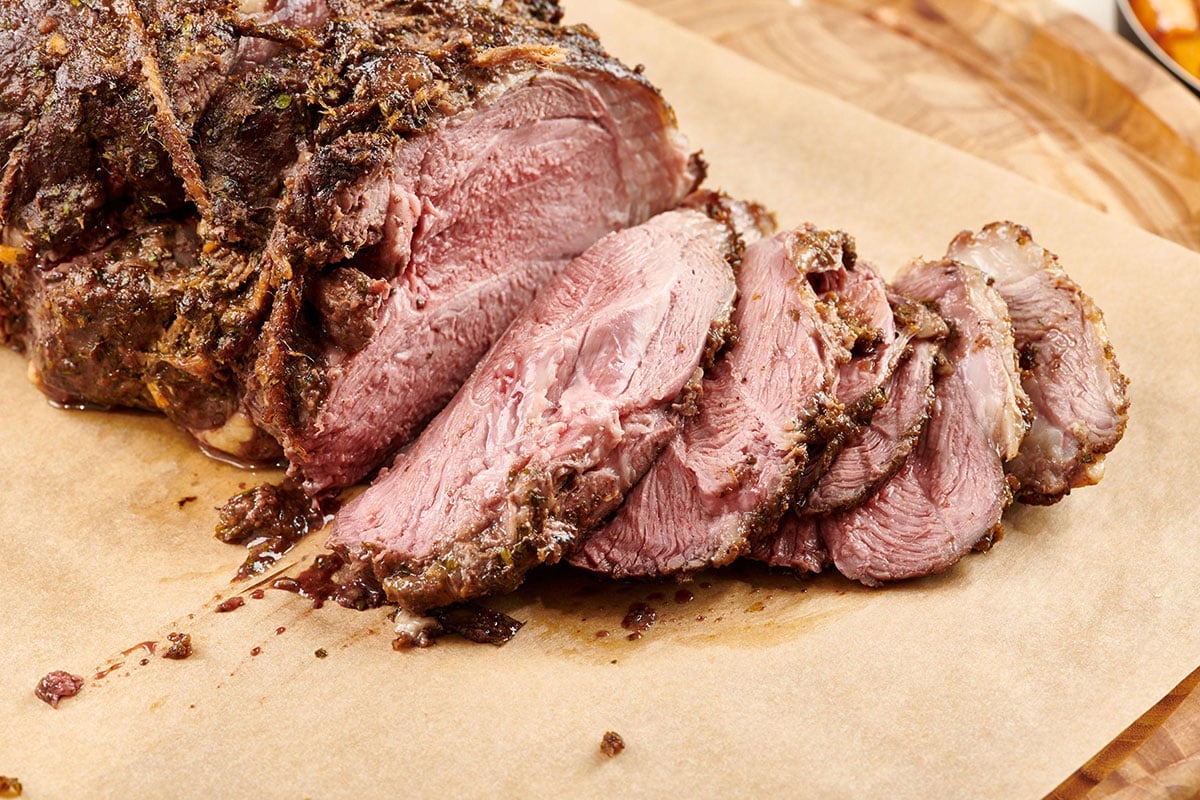
A leg of lamb is one of the quintessential splurgy cuts of meat that are featured in many holiday celebrations, especially Easter and Christmas. The leg of lamb has a very distinctive flavor: grassy, rich, earthy, and pleasantly gamey. Here, you’ll find the leg of lamb cooking tips (along with some amazing recipes) to make sure you get the best results in all the land.
As many of us try to buy meat that is grass-fed, pasture-raised, and/or ethically handled, we now have to accept the higher price tags that come along with this effort to eat meat more responsibly. So, you do NOT want to mess this up. It’s a smart idea to invest a little time in planning out your cooking method and timing and invest in a good meat thermometer (which you will use forever).
By signing up, you agree to our Privacy Policy.
If you are lucky and keep your eyes open, you can often find leg of lamb on sale during the holidays. Check the online circulars of your favorite markets, or if you have a butcher in town, you may want to ask them to alert you when leg of lamb goes on sale. The love in my family’s eyes, however, makes this splurge worth it.
What's In This Post?
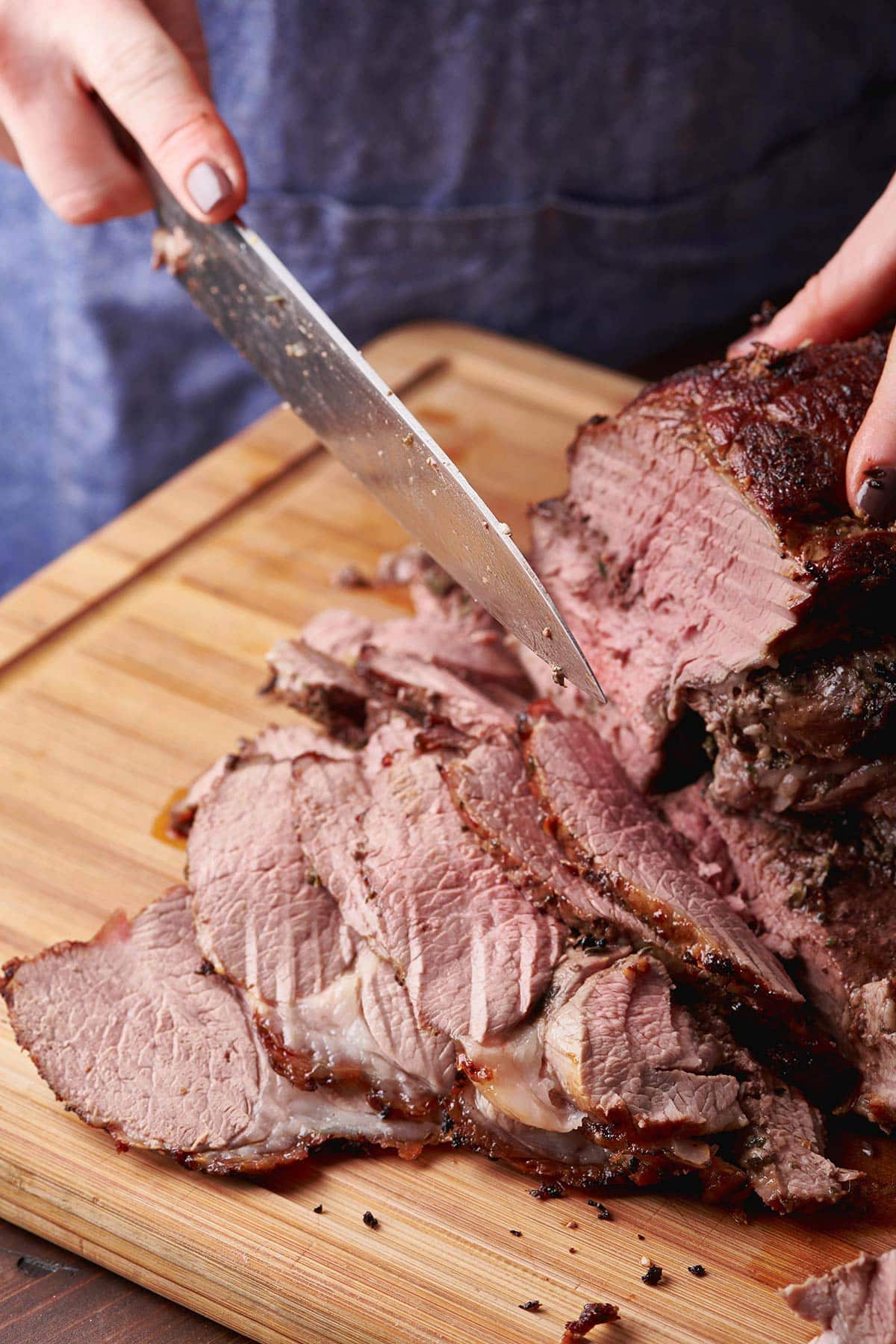
How to Cook Leg of Lamb: Everything you need to know about cooking a perfect, pink, tender leg of lamb for any holiday or celebration.
FAQs
Leg of lamb is commonly served on Easter or Passover, as well as Christmas. It may feel like a bit of an indulgence, but around Easter, this cut of lamb is often on sale. Plus, when better to splurge on your family than a holiday? Whether you are making this for Easter or just because you are looking to have a dinner that feels special and celebratory, a leg of lamb is a terrific treat.
The big secret to perfect lamb? Don’t overcook it. Get yourself a reliable meat thermometer and use it! Be sure to read what the American Lamb Board has to say about cooking lamb to safe temperatures. The temperature will continue to rise after it is taken from the oven, which is expected and planned for with these temperature guideline ranges. Make sure to let the lamb sit for 20 minutes before slicing.
How Much Lamb Do You Need?
The size of leg of lamb you need to buy depends on how many people you’re serving. Also, bone-in or bone-out comes into play since the bone is part of the overall weight of the roast. For instance, a 6-pound semi-boneless leg of lamb will generously feed 12 to 16 people. Plan for about 1/3 to 1/2 pounds of lamb per person (the larger amount allows for seconds or leftovers).
| Leg of Lamb Weight | Number of Servings |
|---|---|
| 4 pounds | 8 people |
| 5 pounds | 10 people |
| 6 pounds | 12 people |
| 7 pounds | 14 people |
Pick the Right Cooking Method for Leg of Lamb
For leg of lamb, roasting or grilling is pretty much the answer, and as the weather gets colder, roasting tops the list since we are cooking indoors. The dry-heat method caramelizes the exterior and allows for even cooking throughout. Sometimes, a recipe will tell you to sear the lamb before roasting, which seals the exterior and encourages a more browned exterior while preserving the tender interior.
Cooking Methods for Leg of Lamb
There are three good ways to cook a leg of lamb in the oven.
- The first is cooking it low and slow, at a low temperature for a long time. This method creates an end result that falls apart in your mouth.
- The second method is blasting the leg with heat in the beginning, which allows it to develop a crusty exterior. Then, lower the heat for the remainder of the cooking time. Many chefs prefer this method.
- Finally, you can also cook the leg of lamb fast, entirely under high heat. This is the quickest method but also the most unreliable. If you do this, you need to monitor the cooking time very carefully since the temperature rises quickly at the end, and you can easily go from medium-rare to medium-well in a matter of minutes.
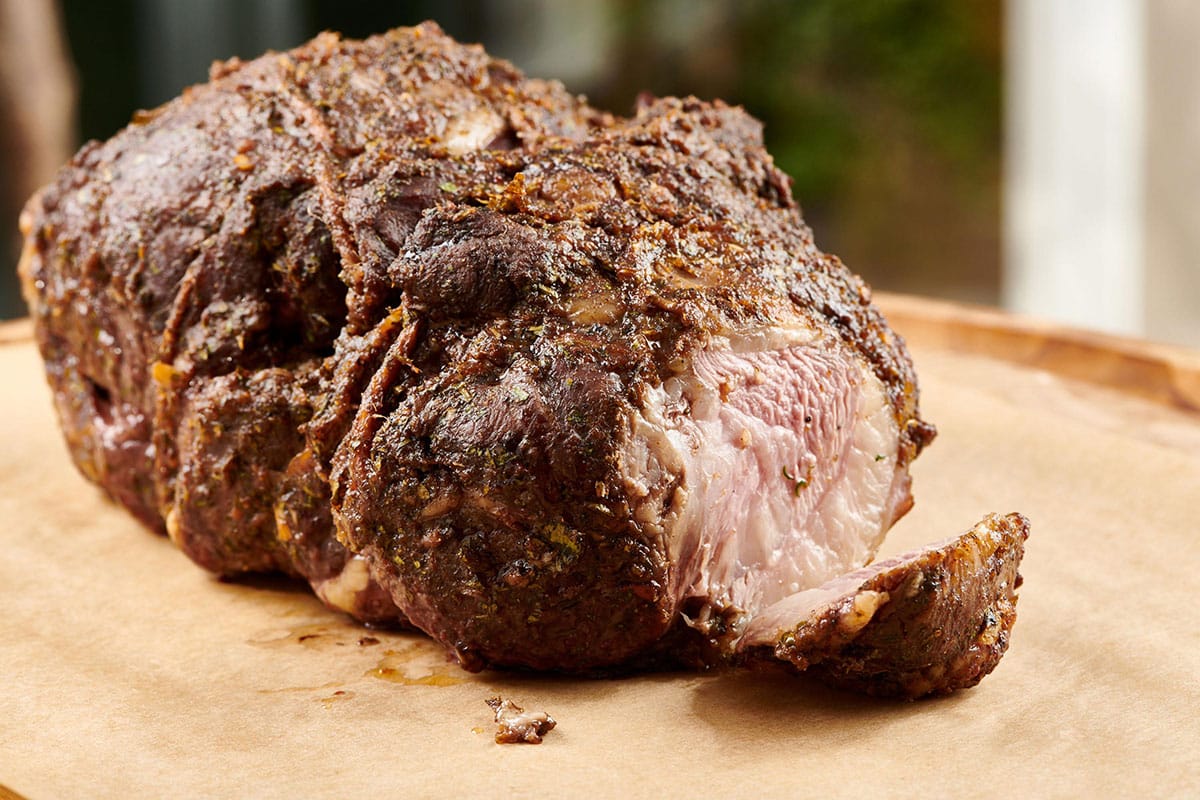
Bring the Leg of Lamb to Room Temperature Before Cooking
When you take the leg of lamb out of the fridge and let it warm up a bit, the outside will not cook too quickly before the inside has a chance to lose the chill and cook. Yes, of course, the outside will be browner and more cooked than the inside; that’s intentional. But bringing the meat to room temp before roasting will prevent a too-overcooked exterior or too-raw interior.
Choose the Cooking Temperature Wisely
There are different schools of thought on this. Some people sear the lamb first, some cook it slow and steady, and some switch from high to low heat during the roasting process. All of these methods can work very well; make sure you find a recipe from a reliable source (there are a few below!) and follow it precisely. And make sure the oven is fully preheated to the temperature you chose before putting the meat in.
How to Make Leg of Lamb Tender
One of the most reliable ways to get to a tender leg of lamb is to cook it at a very low temperature for a longer period of time. The low temperature makes sure that the lamb cooks all the way through to the center before the outside overcooks. The long cooking time allows the fibers of the lamb to break down slowly in the oven. Cooked this way, your lamb will be evenly cooked, super tender, and juicy.
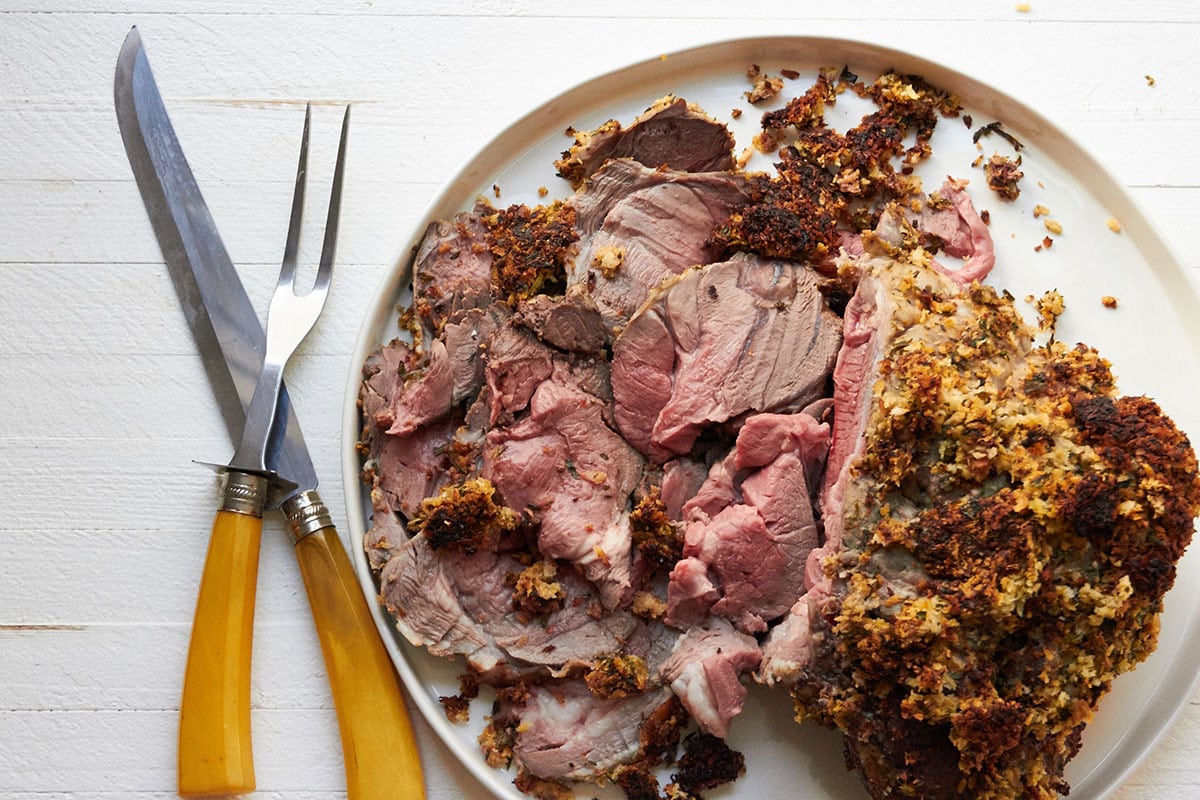
How Long to Cook Leg of Lamb
The cooking time really depends on the size and thickness of the leg of lamb in conjunction with the temperature of the oven. Each recipe will be different, so it’s really best to follow the instructions and have an instant-read thermometer. However, this chart will give you basic guidelines for cooking a bone-in or semiboneless leg of lamb.
| Approximate Cooking Time per Pound | Doneness and Internal Temperature |
|---|---|
| 18–25 min/lb | Rare (120 degrees) or Medium-Rare (125 degrees) |
| 25–30 min/lb | Medium (130 degrees) |
| 30–35 min/lb | Medium-Well (140 degrees) or Well-Done (150 degrees) |
If you are investing in an expensive cut of meat, you want to make sure you are taking it out at the exact right desired doneness. This is really only achievable if you use an internal thermometer to assess the innermost temperature of the meat at its thickest point, making sure the thermometer is not touching any bone. There are a variety of internal thermometers available, from ones you can check remotely to instant-read versions.
Here are some good meat thermometers to consider (which, by the way, make a really good gift for meat-loving cooks):
- Thermapen One
- ThermoPro Ultra Fast Thermocouple Digital Instant Read Thermometer
- ThermoPro Large LCD Digital Thermometer with Stainless Steel Probe
- Lavatools Javelin PRO Duo Digital Instant Read Thermometer
FTC Disclosure: As an Amazon Associate I earn from qualifying purchases.
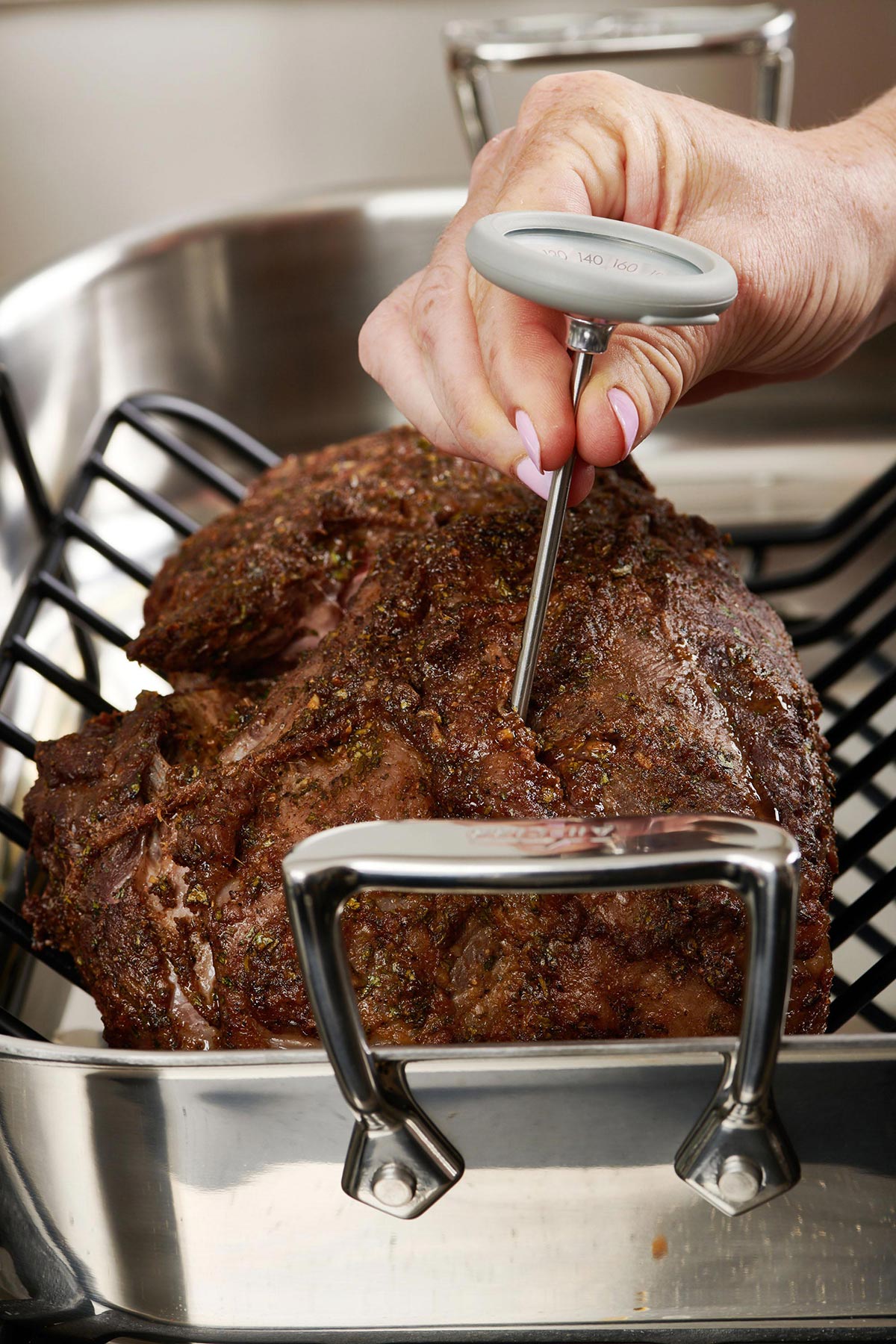
Let Leg of Lamb Rest for at Least 20 Minutes Before Slicing
This might be the most important takeaway of all. Carryover cooking is the fact that almost all foods continue to “cook” after they’re removed from direct heat, so the internal temperature will continue to rise. This is extra significant and relevant with meat. It is also much more important to take into consideration when you are cooking meat at a high temperature; the internal temp will rise as much as 15 degrees after being removed from the oven if you are cooking the meat at high heat.
So, if you want your lamb to be rare/medium-rare, which would be an internal temperature of 120 to 125 degrees, you want to take the roast out of the oven when the internal temperature reaches 115 to 120 degrees. This is also true for other cuts of beef or lamb, such as steak and rack of lamb. Then, the temperature will continue to rise 5 to 15 degrees as it sits, depending on its size and the temperature of the oven.
You also want to let the meat sit after cooking because the fibers of the protein change while the meat is cooking and need to relax post-cooking in order to reabsorb the juices of the meat.
If you’ve ever had the experience of cutting open a leg of lamb to see perfectly rosy meat and lovely juices, only to have the meat turn tough and gray a bit later, that’s because you cut into it too early. The juices ran out of the meat onto the cutting board instead of being reincorporated into the meat. Patience is more than a virtue here; it’s a necessity. A leg of lamb should sit for 20 to 30 minutes before you cut into it.
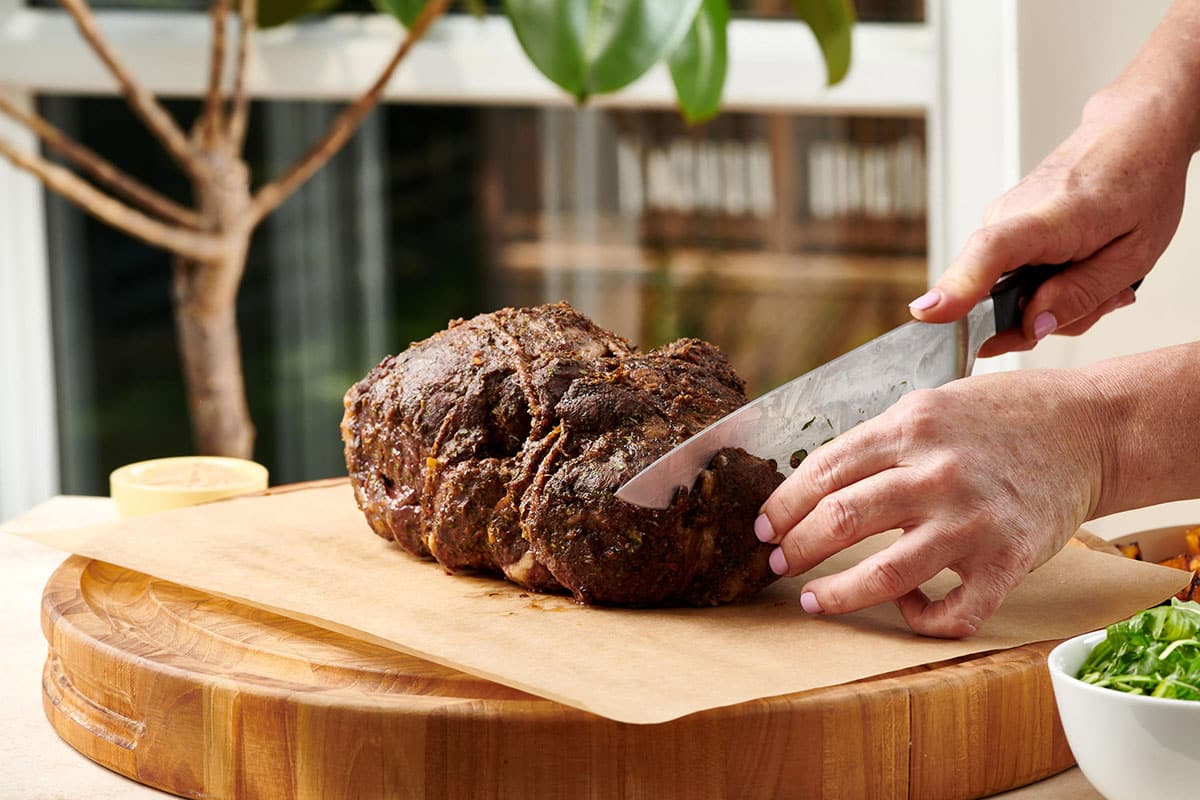
5 Amazing Leg of Lamb Recipes
Here are some recipes for this showy cut of lamb!
